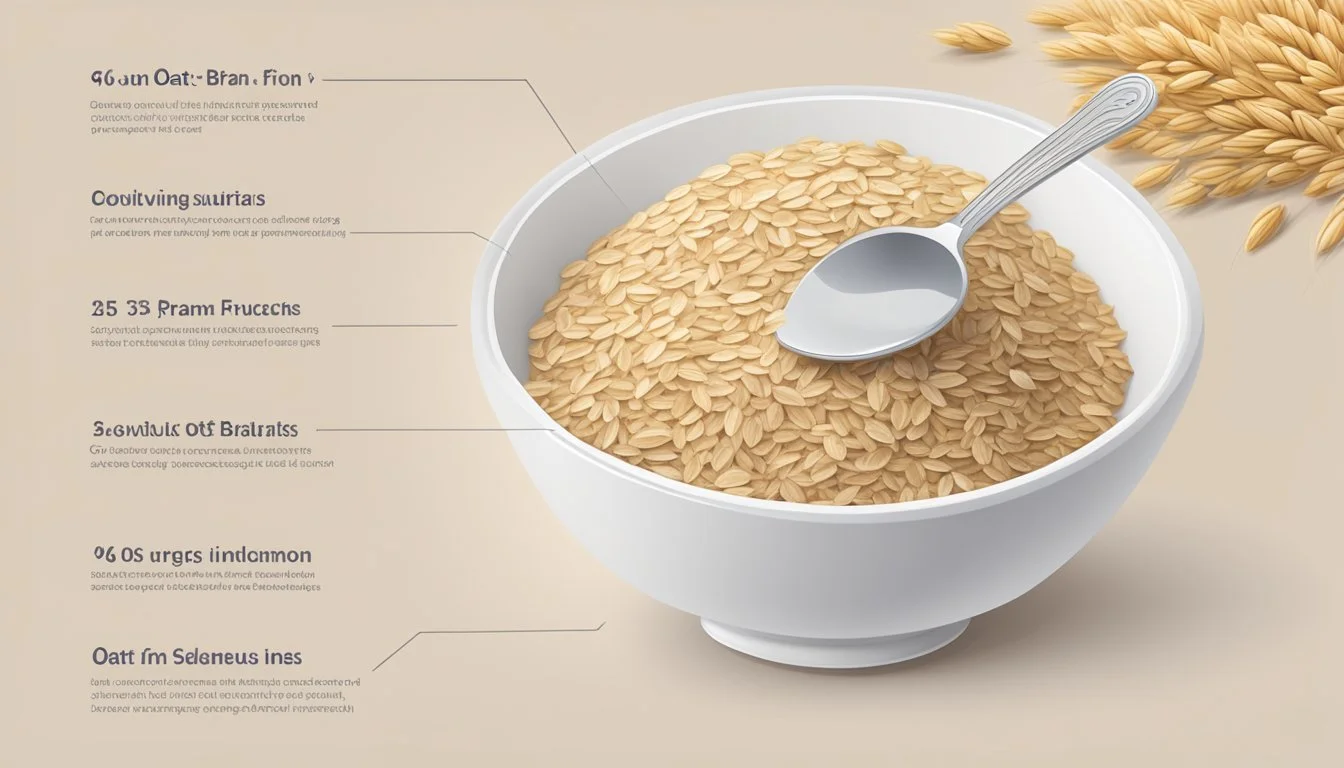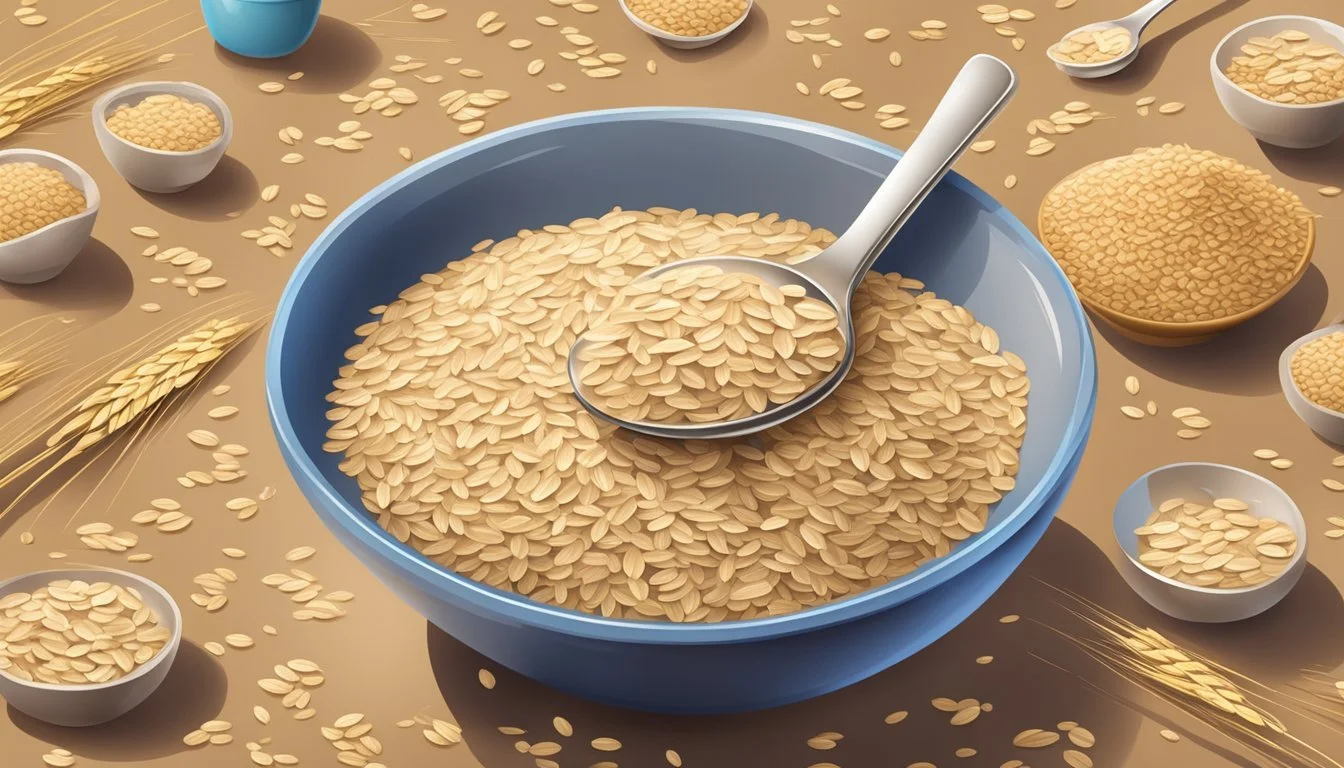How Much Oat Bran Per Day Is Too Much?
Understanding Limits and Guidelines
Oat bran is a valuable source of dietary fiber and has become a popular choice for those looking to enhance their fiber intake. It’s derived from the outer layer of the oat groats and is often recommended for its potential health benefits, which include improved digestive health and assistance in regulating blood sugar levels. While including oat bran as part of a balanced diet is beneficial, it’s important to moderate intake.
Consuming oat bran within recommended quantities can support cardiovascular health due to its beta-glucan content, a type of soluble fiber that can help in reducing cholesterol levels. A typical recommendation is to consume at least 3 milligrams of beta-glucan per day, which corresponds to about 40 grams of oat bran. This can equate to roughly two heaped tablespoons and is easily incorporated into the daily diet through various foods like cereals and baked goods.
However, excessive intake of oat bran could potentially lead to undesirable effects. While fiber is essential for digestive health, an exceedingly high fiber intake can interfere with the absorption of certain nutrients and may cause gastrointestinal discomfort. Thus, it is crucial to find a balance that suits individual dietary needs without going overboard. It is imperative to listen to the body's signals and to ensure a varied diet to maintain overall health.
Nutritional Profile of Oat Bran
Oat bran has a rich nutritional profile with a beneficial blend of macronutrients, essential vitamins and minerals, and health-promoting compounds. It's a powerhouse of nutrients that supports a healthy diet.
Macronutrients and Calories
Protein: Oat bran is a good plant-based protein source, offering around 7 grams per 1/3 cup serving.
Fiber: High in fiber, it provides about 15.4 grams per 100 grams with a significant portion being soluble fiber, specifically beta-glucan.
Calories: Oat bran's calorie content is lower compared to whole oats, making it a lighter, yet filling, addition to meals.
Vitamins and Minerals
Oat bran is a treasure trove of vitamins and minerals. It contains:
Magnesium: Supports muscle and nerve function.
Phosphorus: Crucial for healthy bones and teeth.
Iron: Essential for blood cell production.
Zinc: Aids immune system efficiency.
For vitamins, it is a good source of B-vitamins like thiamin, riboflavin, niacin, and vitamin B6, all of which are necessary for maintaining optimal health.
Health-Promoting Compounds
Oat bran is recognized for its content of antioxidants, including avenanthramides, which contribute to its anti-inflammatory properties. The star compound, beta-glucan, is a form of soluble fiber known for supporting heart health by helping to maintain normal blood lipid levels.
Health Benefits of Oat Bran
Oat Bran is a powerhouse of nutritional value, offering a blend of soluble and insoluble fiber, which contributes to various health benefits. Its key components, such as beta-glucan, play a pivotal role in enhancing heart health, aiding digestive well-being, regulating blood sugar levels, and helping in weight management.
Heart Health
Oat bran is an excellent source of soluble fiber, particularly beta-glucan, which is known to help reduce cholesterol levels. Consuming oat bran may lead to lowered risk of heart disease, as it can diminish the absorption of cholesterol into the bloodstream, thus maintaining healthier arteries and possibly lower blood pressure.
Digestive Well-being
The high fiber content in oat bran benefits the digestive system by aiding regular bowel movements and preventing constipation. It includes a balance of both soluble and insoluble fiber, which work together to bulk up stool and help it pass more easily through the digestive tract.
Blood Sugar Regulation
Oat bran can support blood sugar control due to the presence of soluble fiber, which slows down the digestion and absorption of carbohydrates. This results in a more gradual increase in blood sugar levels, which is particularly beneficial for individuals managing diabetes.
Weight Management
In terms of weight loss and appetite control, oat bran is a helpful ally. Its fiber content contributes to a feeling of fullness, which can suppress appetite and prevent overeating. Regular consumption of oat bran as part of a balanced diet might assist in maintaining a healthy weight.
Recommendations and Safety
Consuming oat bran can offer numerous health benefits due to its high content of dietary fiber, but it's important to adhere to recommended intake levels and be aware of potential risks.
Daily Intake Guidelines
The general recommendation for oat bran intake is to consume about 40 grams per day, translating to roughly two heaped tablespoons. This amount provides approximately 3 milligrams of ß-glucan, a soluble fiber beneficial for cholesterol regulation and blood sugar control. Oat bran can be particularly advantageous for individuals managing type 2 diabetes or aiming to maintain a healthy cholesterol level.
For an adult, the total dietary fiber intake should be between 25 and 38 grams per day, as advised by the Institute of Medicine. Since oat bran is a concentrated source of fiber, it should be incorporated into one’s diet as part of this total fiber quota.
Risks and Considerations
While oat bran is a healthy addition to most diets, there are considerations to note:
Gluten Contamination: Oat bran is naturally gluten-free, but those with celiac disease should ensure it is not contaminated with gluten from other sources.
Excessive Fiber: Too much fiber can lead to gastrointestinal discomfort, such as bloating or constipation, and interfere with the absorption of certain minerals.
Sugar and Calories: Some oat bran products may contain added sugar or fat, contributing to extra calories. Always check product labels, especially if weight management is a goal.
Inflammatory Bowel Disease: Individuals with inflammatory bowel conditions should introduce fiber gradually to prevent any adverse effects.
Colorectal Cancer: A high-fiber diet, which includes oat bran, is often recommended for its potential protective effects against colorectal cancer. However, incorporating fiber should be done thoughtfully, considering overall diet and health status.
Individuals are encouraged to consult with a healthcare provider before making significant changes to their diet, especially those with health conditions or dietary restrictions.
Incorporating Oat Bran into Your Diet
Incorporating oat bran into one's diet can contribute to heart health by managing cholesterol levels, and support the digestive tract with its high fiber content. Here are specifics on how to add oat bran to meals and various uses in daily cooking.
Delicious Recipe Ideas
One can enjoy oat bran in a variety of dishes. A simple way to start the day is with a bowl of oatmeal or porridge made with oat bran, which is a whole grain. This can be prepared by combining 1/4 cup of oat bran with 1 cup of water or milk and a pinch of salt, then cooking until creamy. For added flavor and nutrients, consider mixing yogurt and fresh fruit into the oatmeal. Oat bran can also be used to make granola, offering a crunchy and nutritious option.
Granola Recipe Example:
2 cups oat bran
1/2 cup honey or maple syrup
1/2 cup chopped nuts
1 tsp. vanilla extract
Pinch of salt
Mix the wet ingredients with the oat bran, spread on a baking sheet, and bake until golden brown.
Alternative Uses of Oat Bran
Beyond traditional uses in breakfast foods, oat bran serves as a versatile ingredient in many recipes. Registered Dietitian Nutritionists (RDN) have used oat bran to bolster the fiber content in smoothies, baked goods, and even as a thickener for soups and stews. The high-fiber content of oat bran can aid gut bacteria and may be beneficial for those managing diabetes due to its potential to regulate glucose levels. It can also be added to meatloaf or veggie burgers to improve texture and nutritional value.
To summarize, oat bran is a highly adaptable ingredient that can enhance meals, making them more satisfying and healthful, especially beneficial for heart and digestive health.






